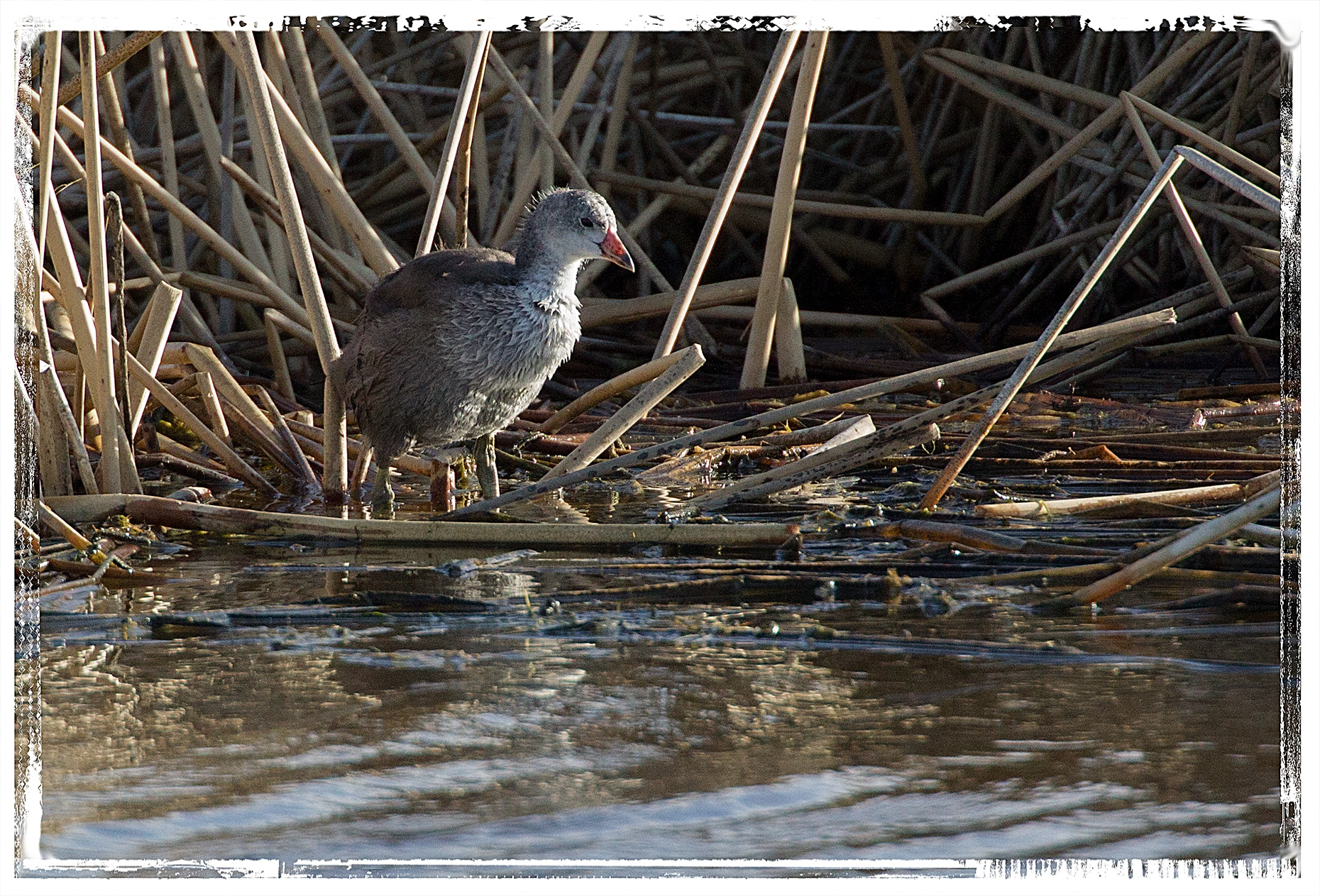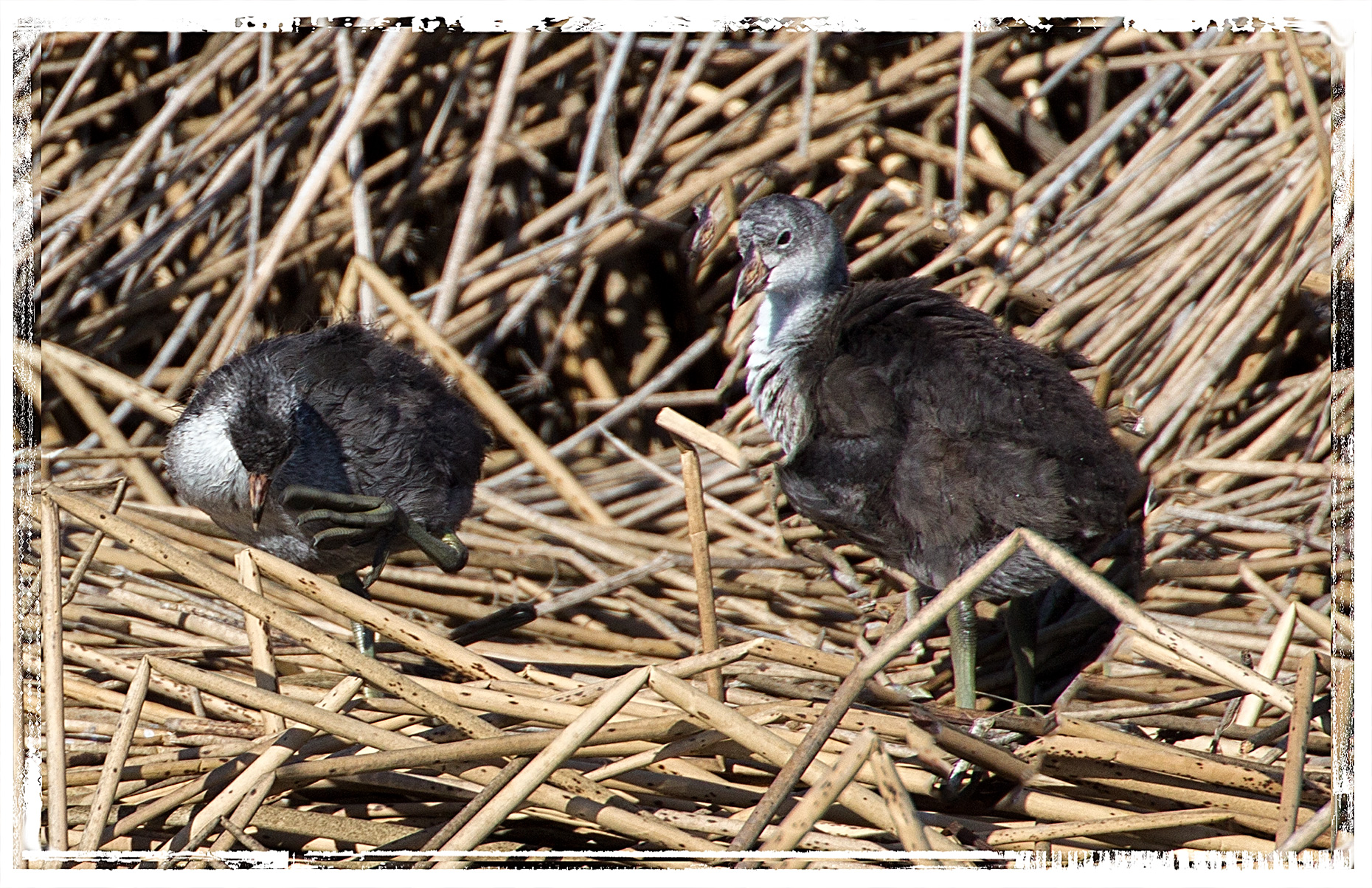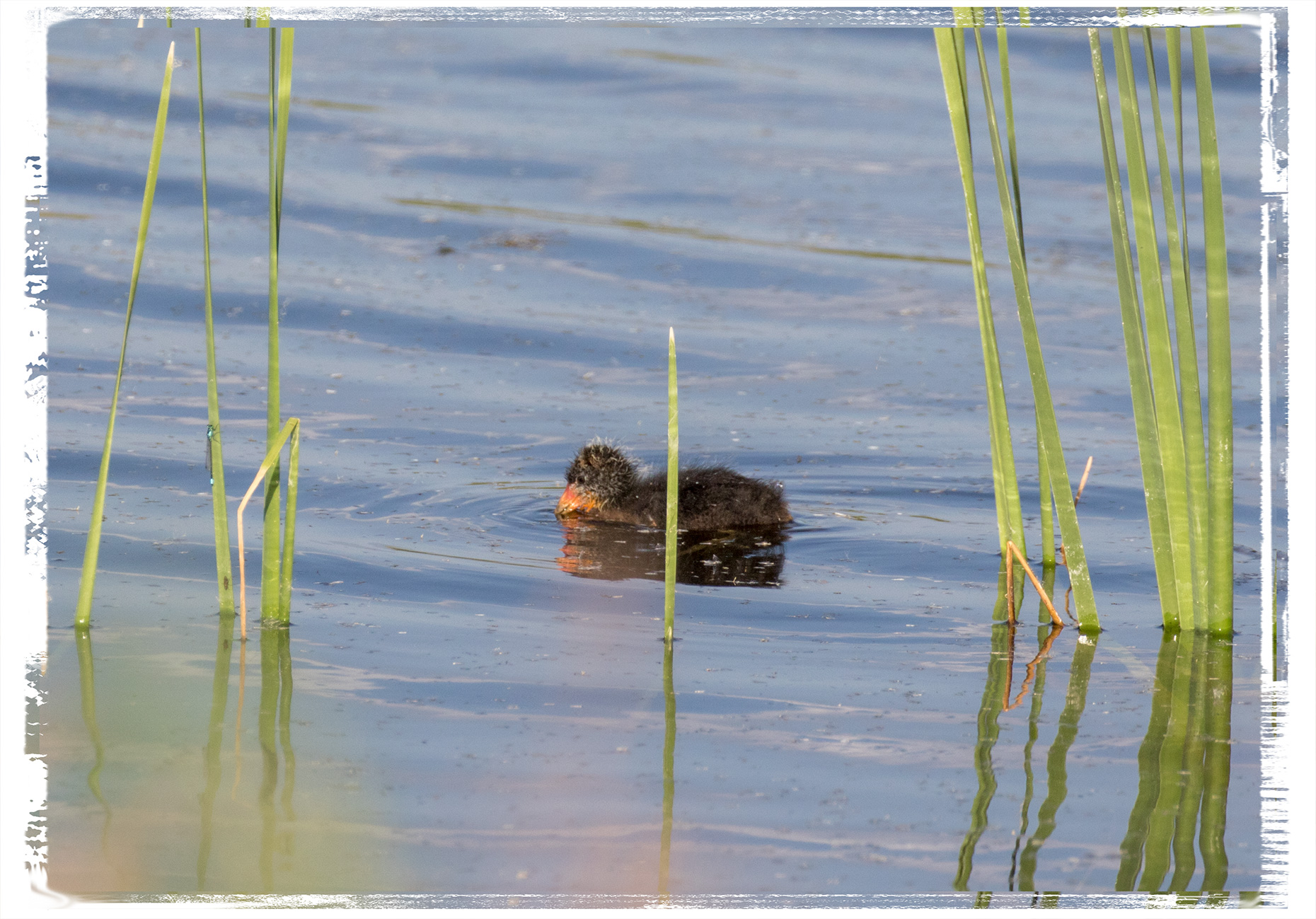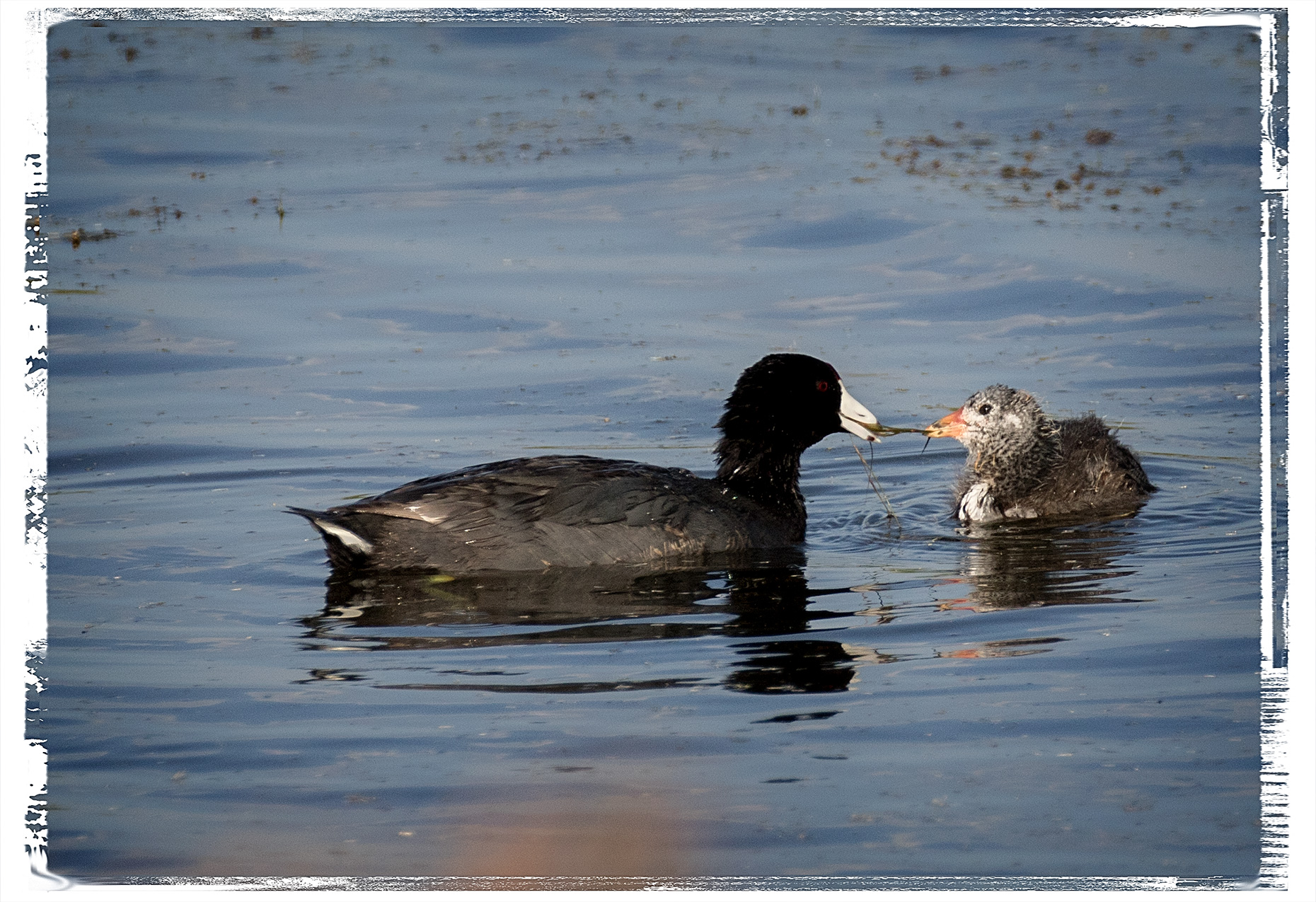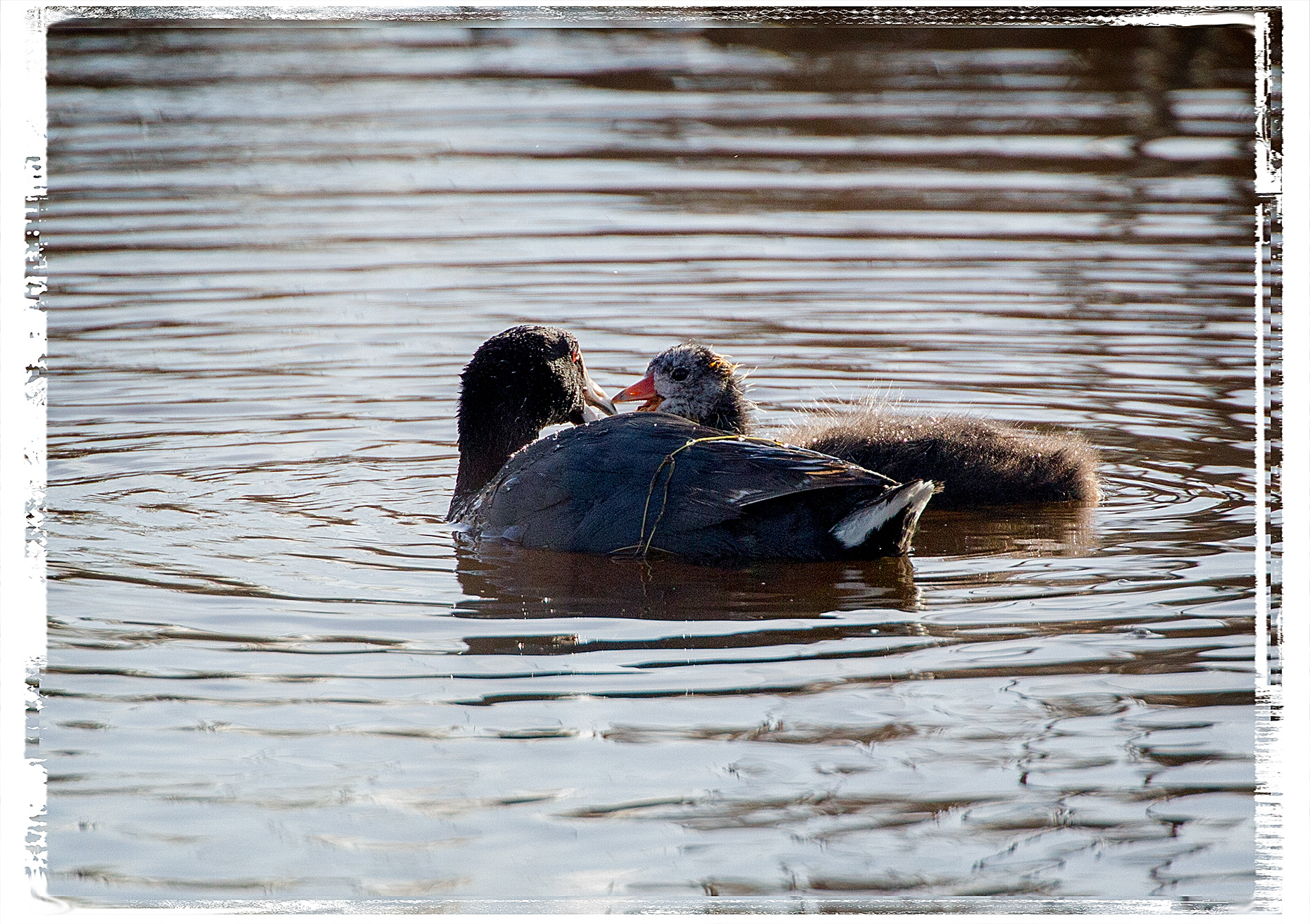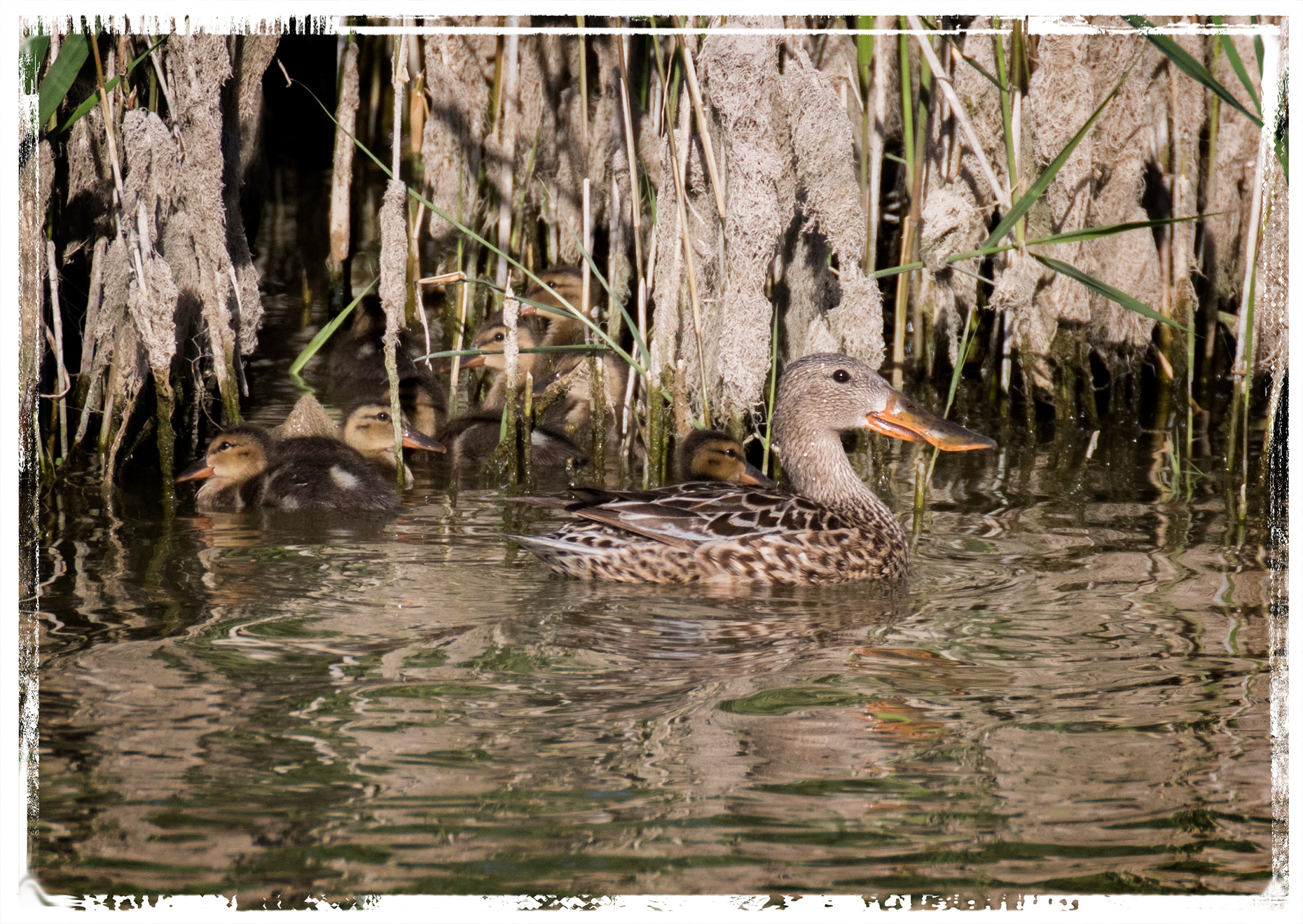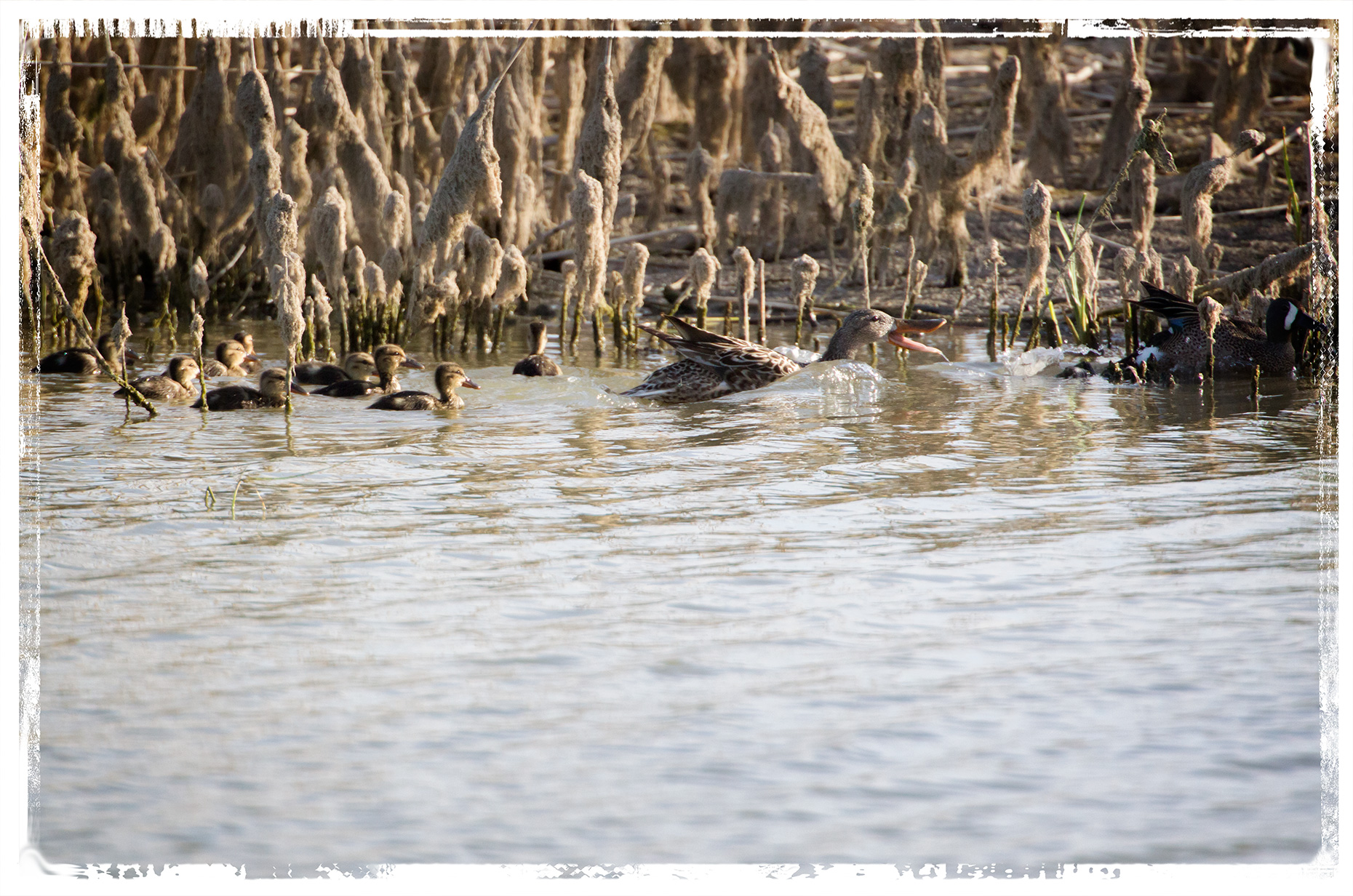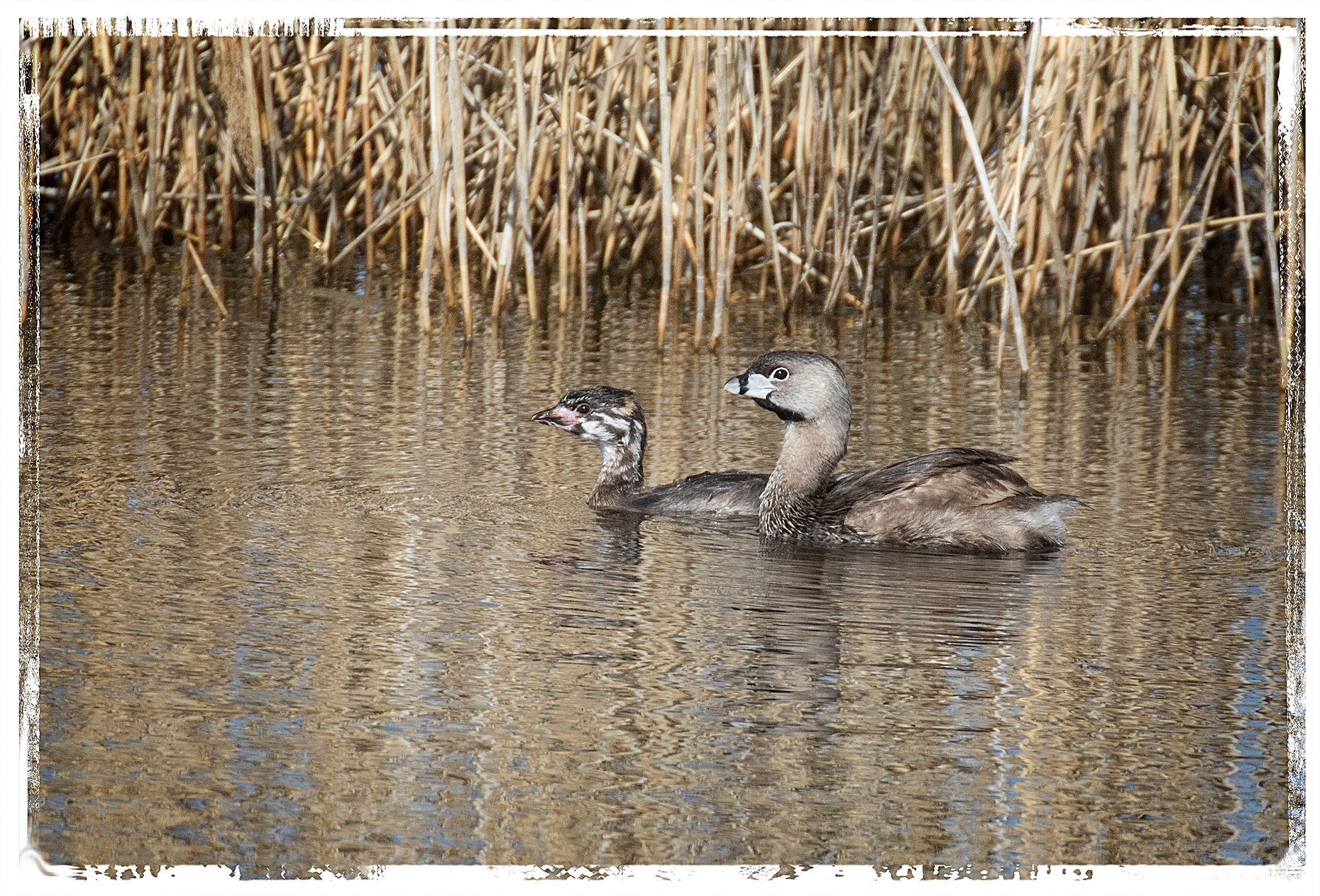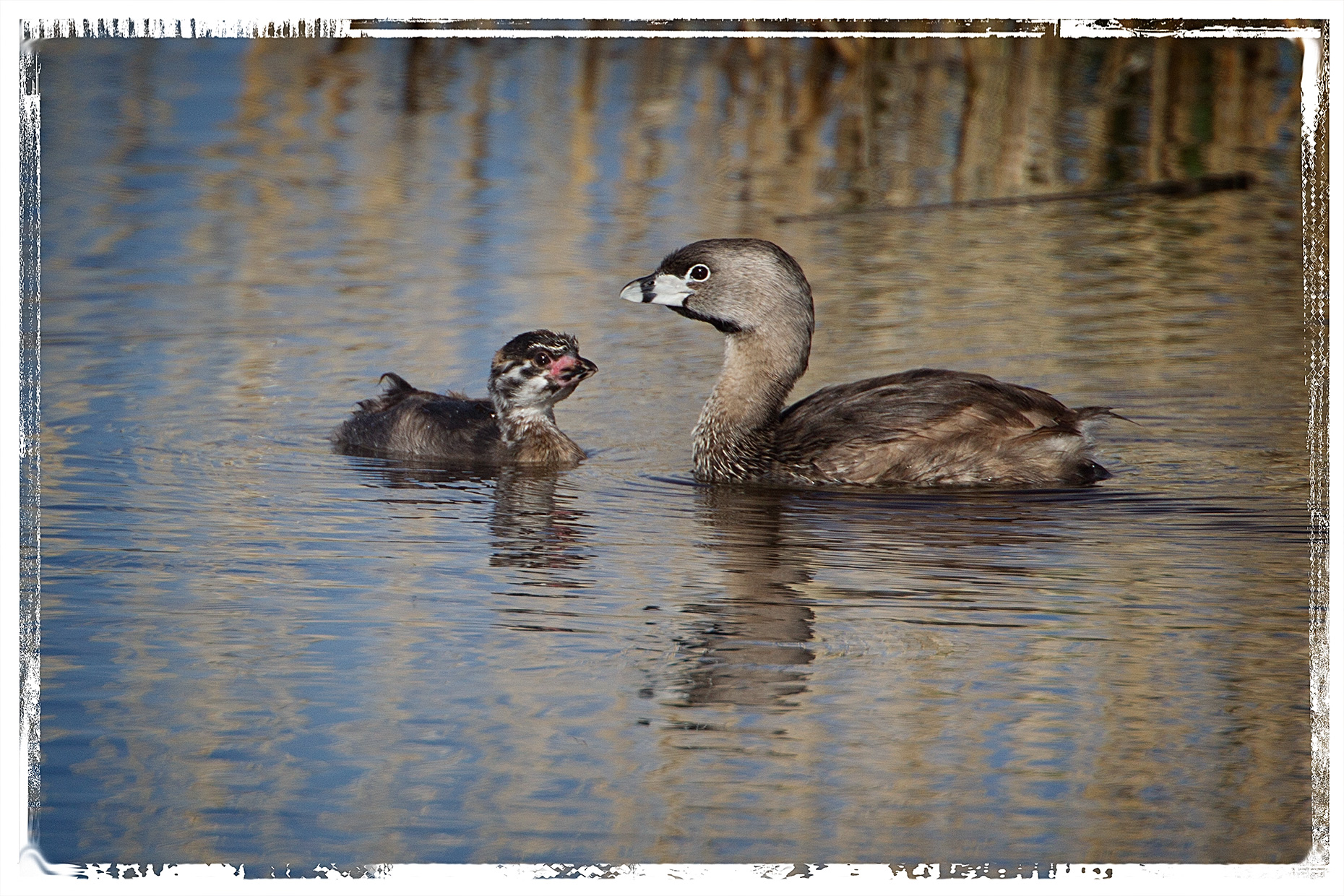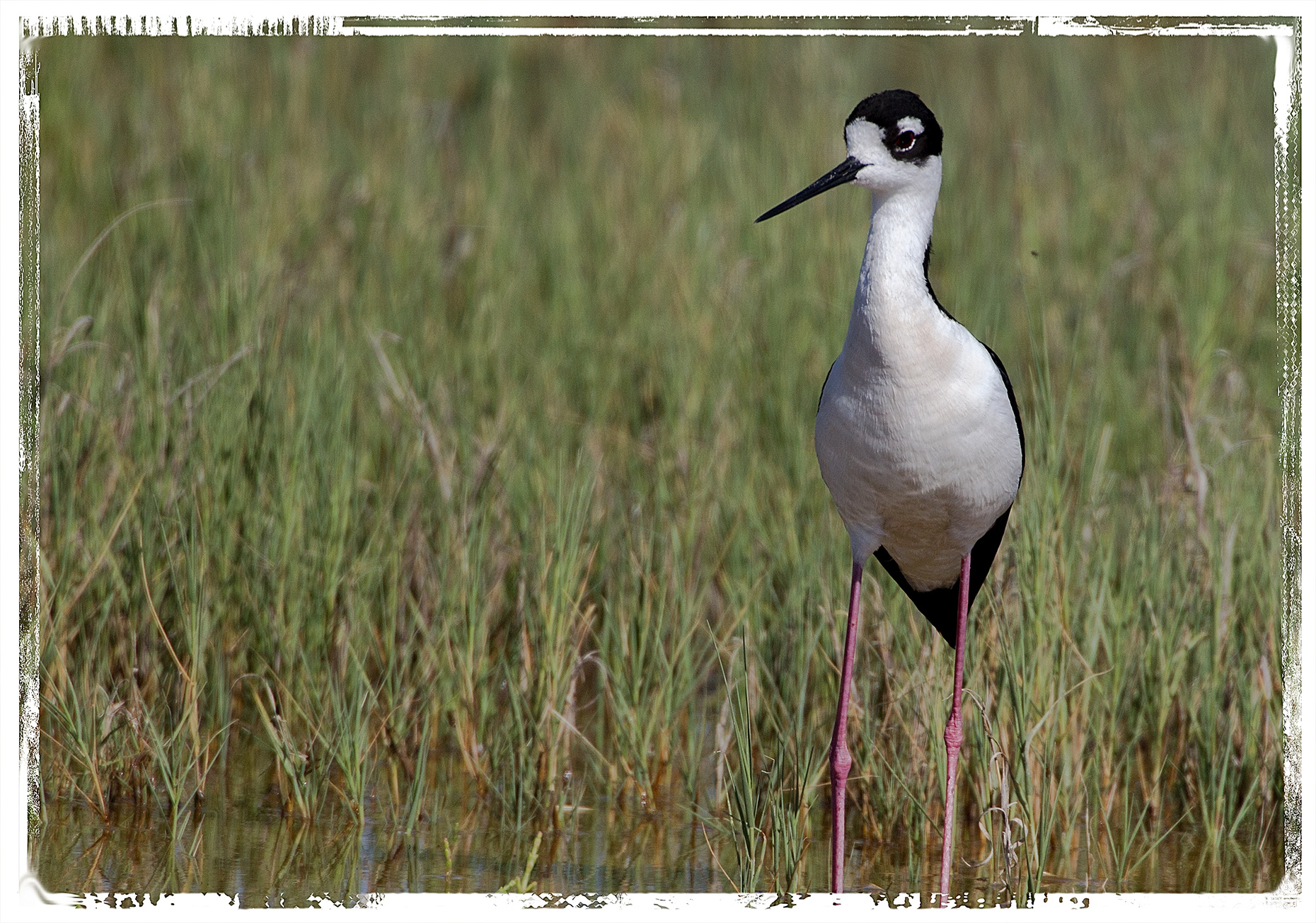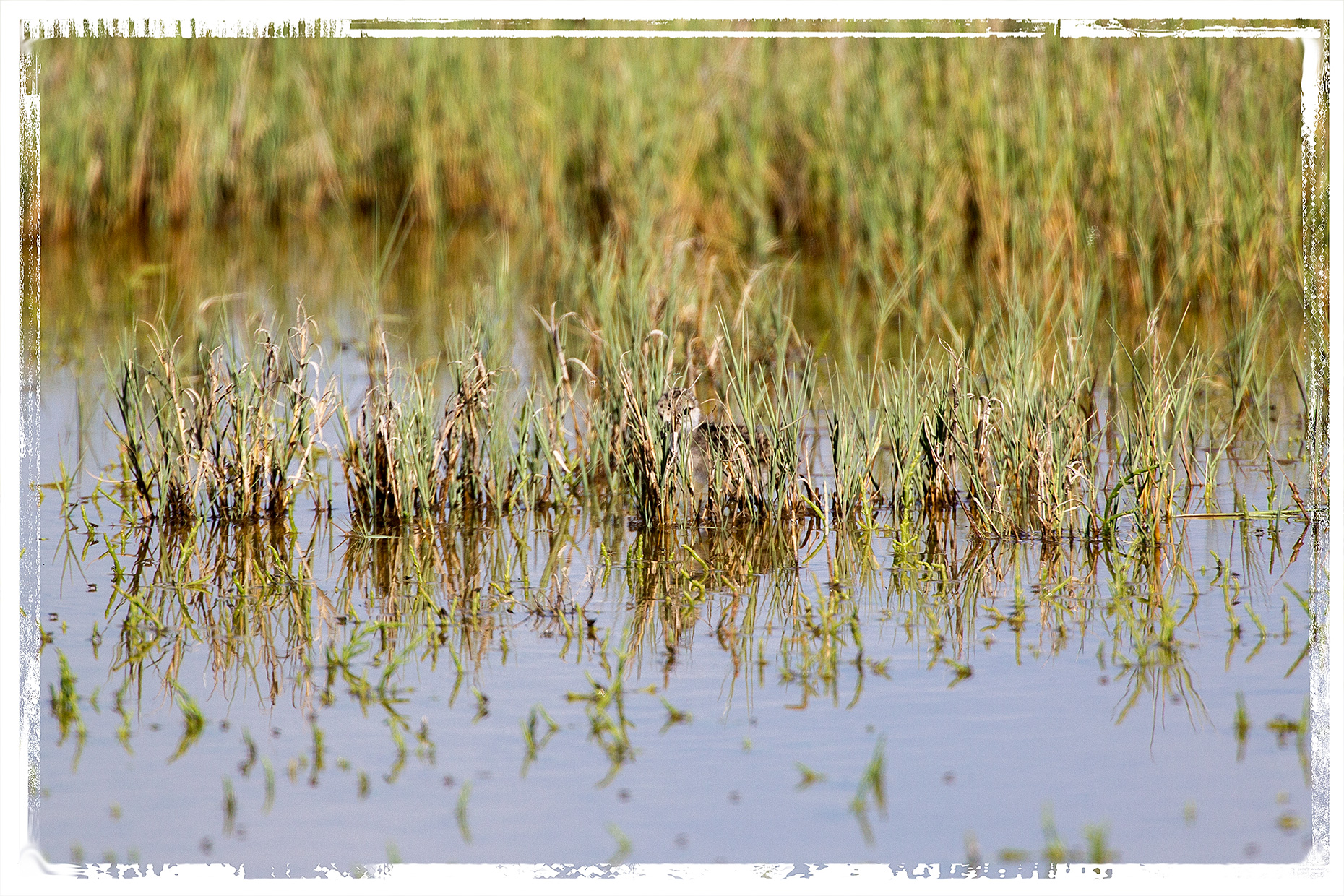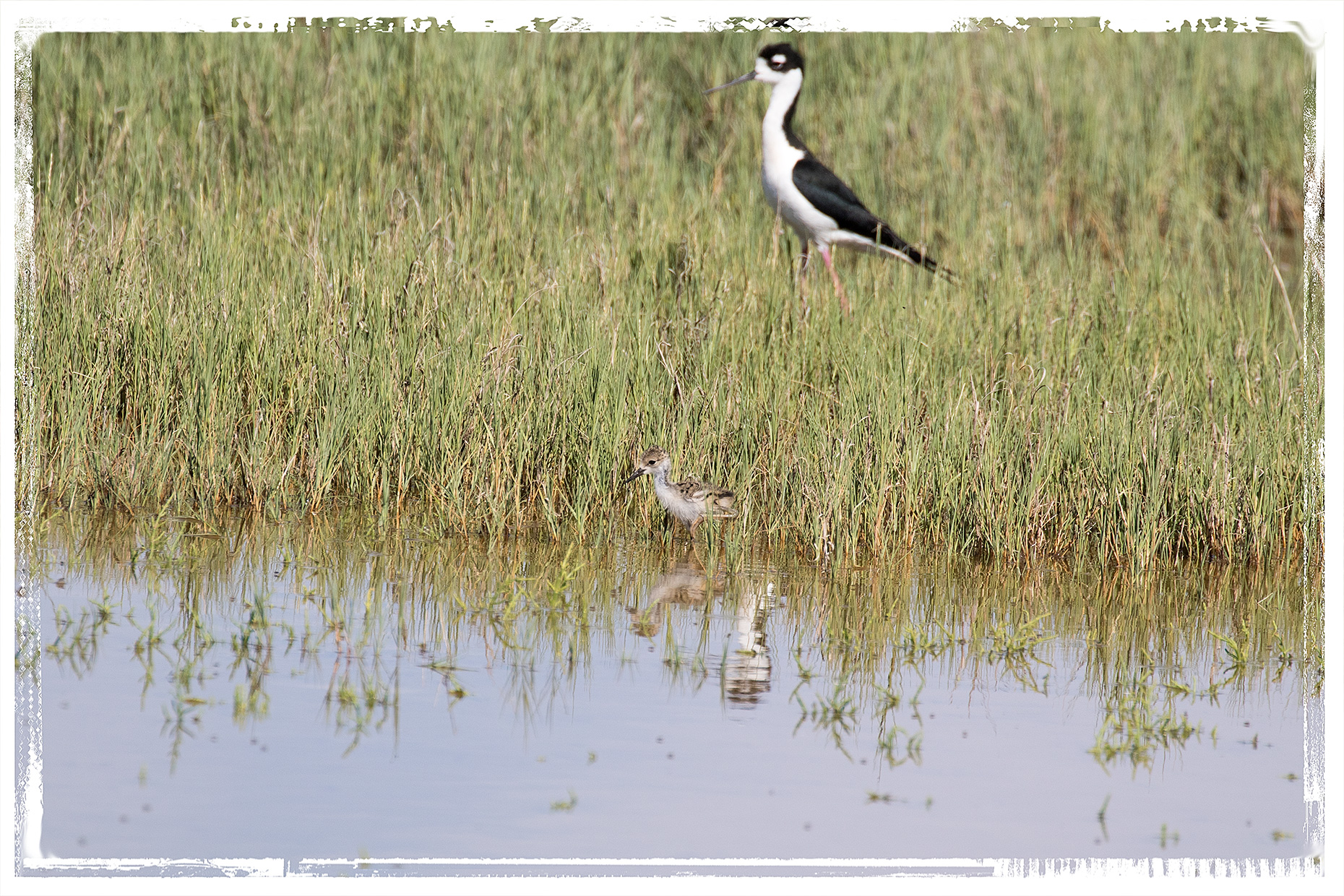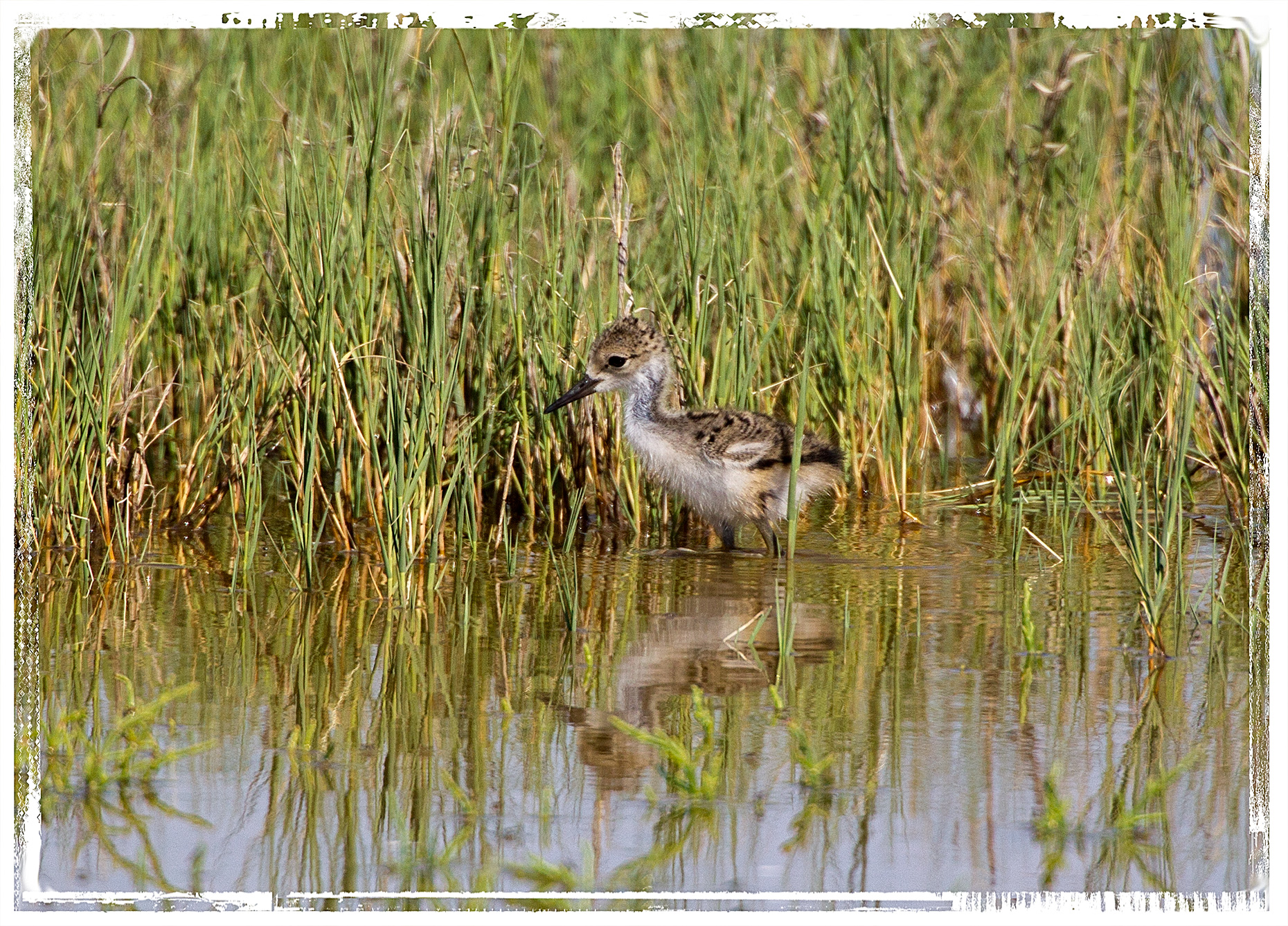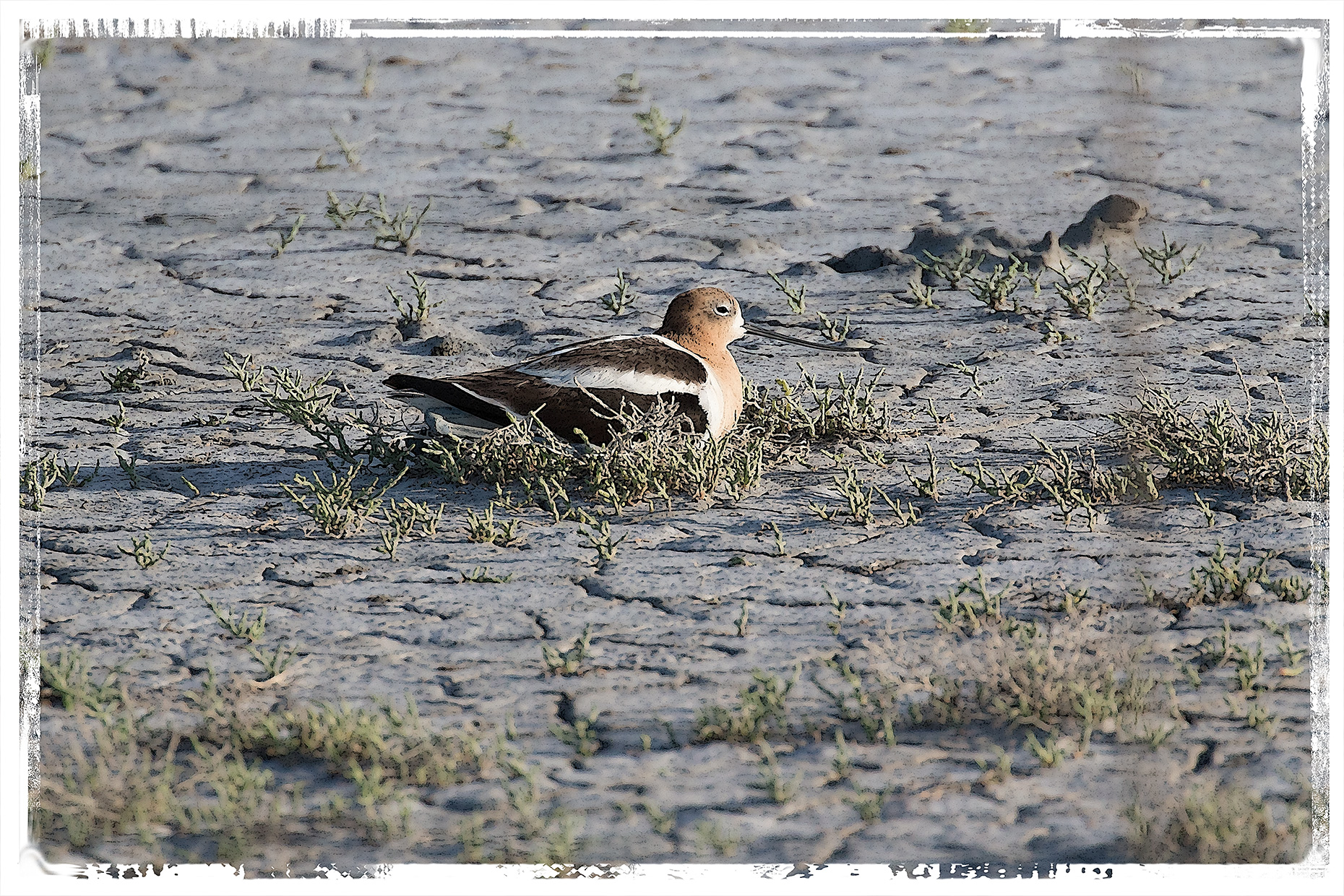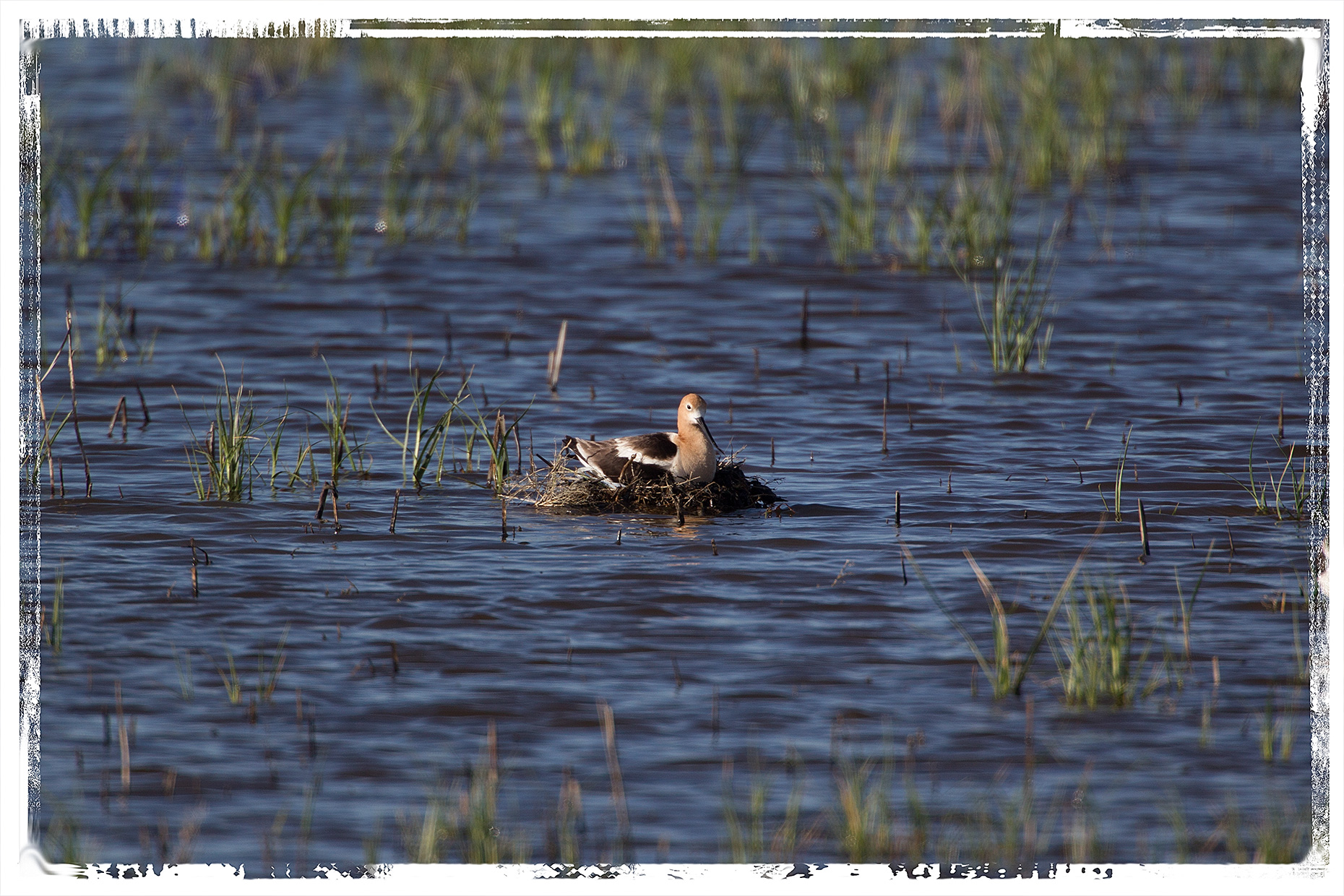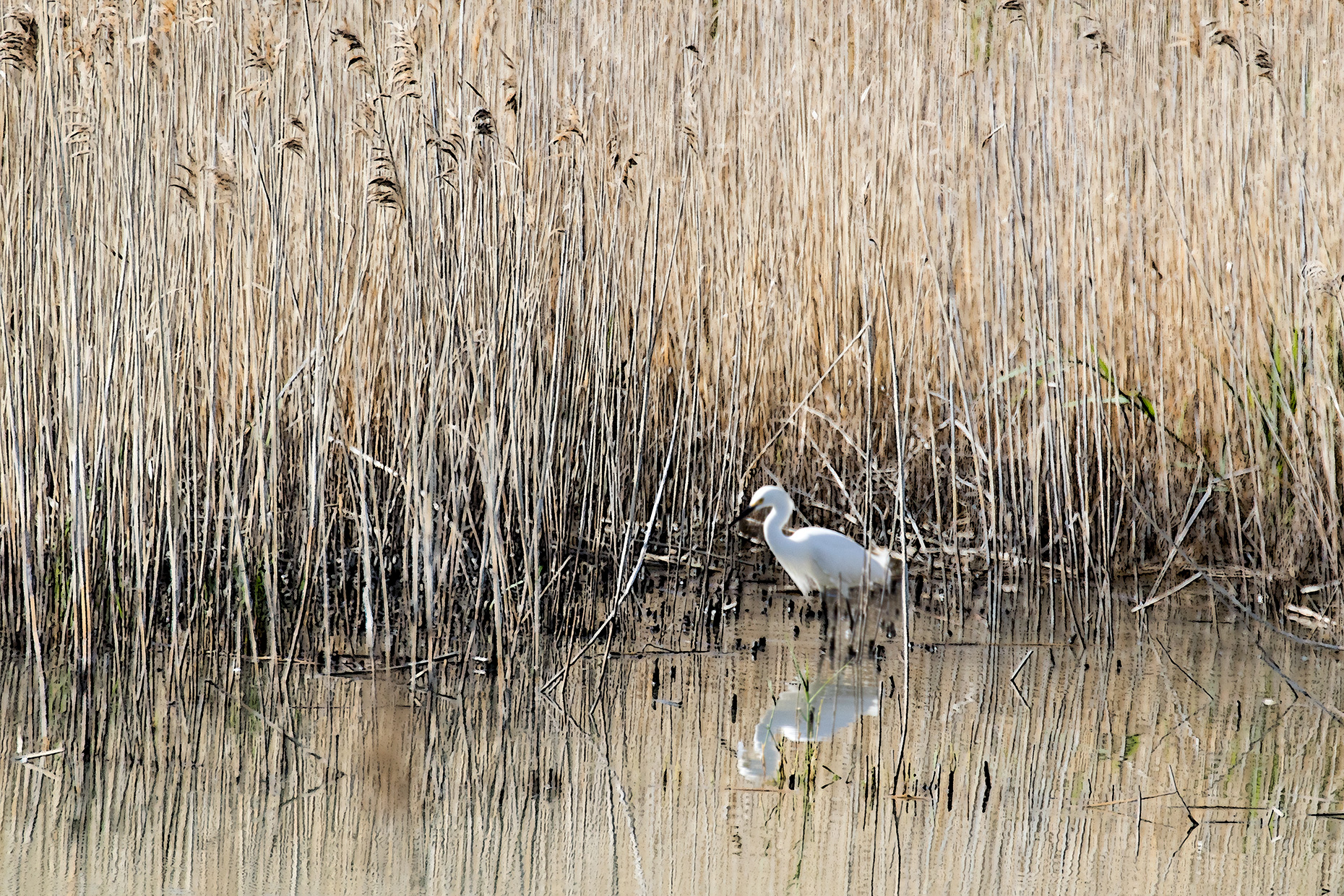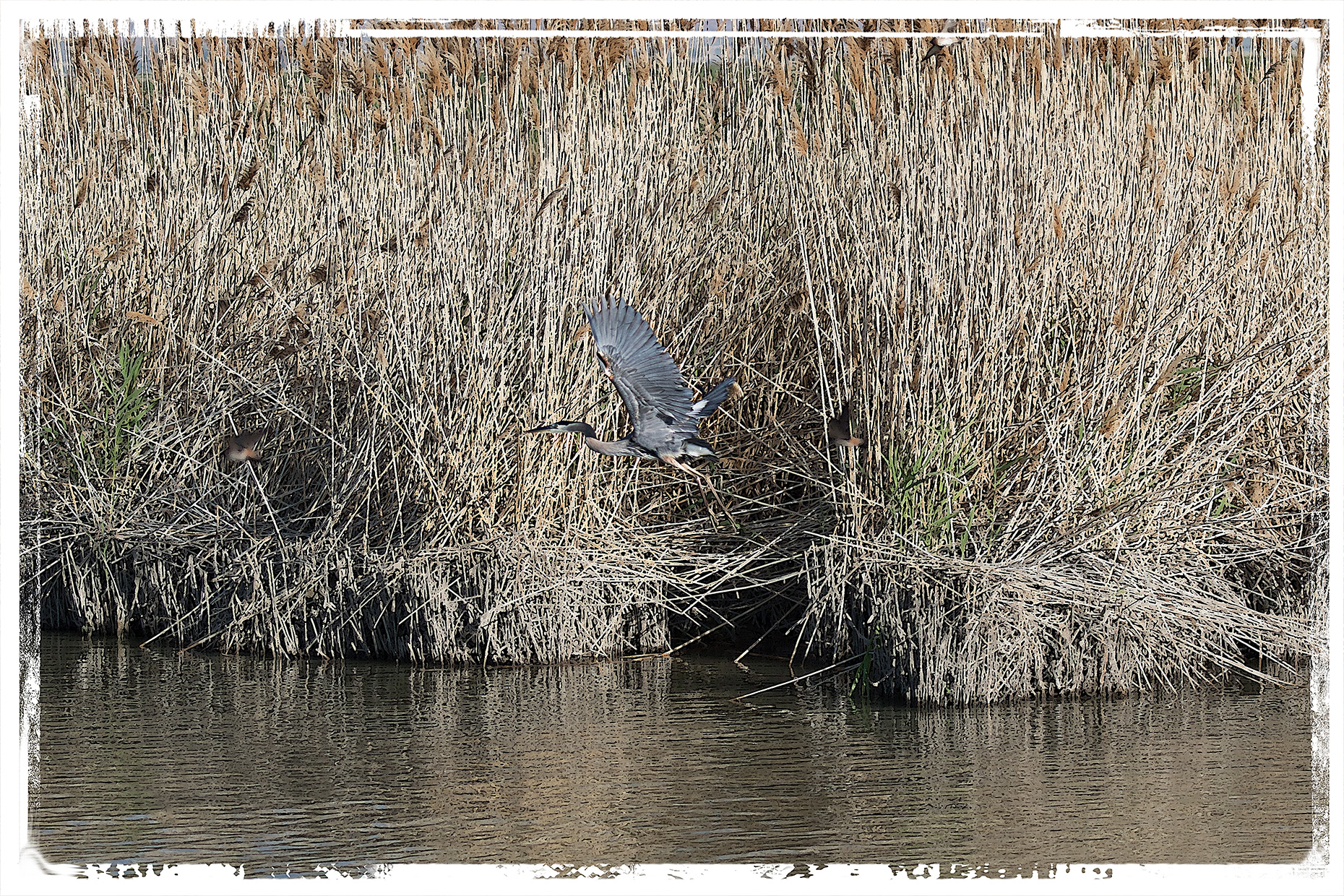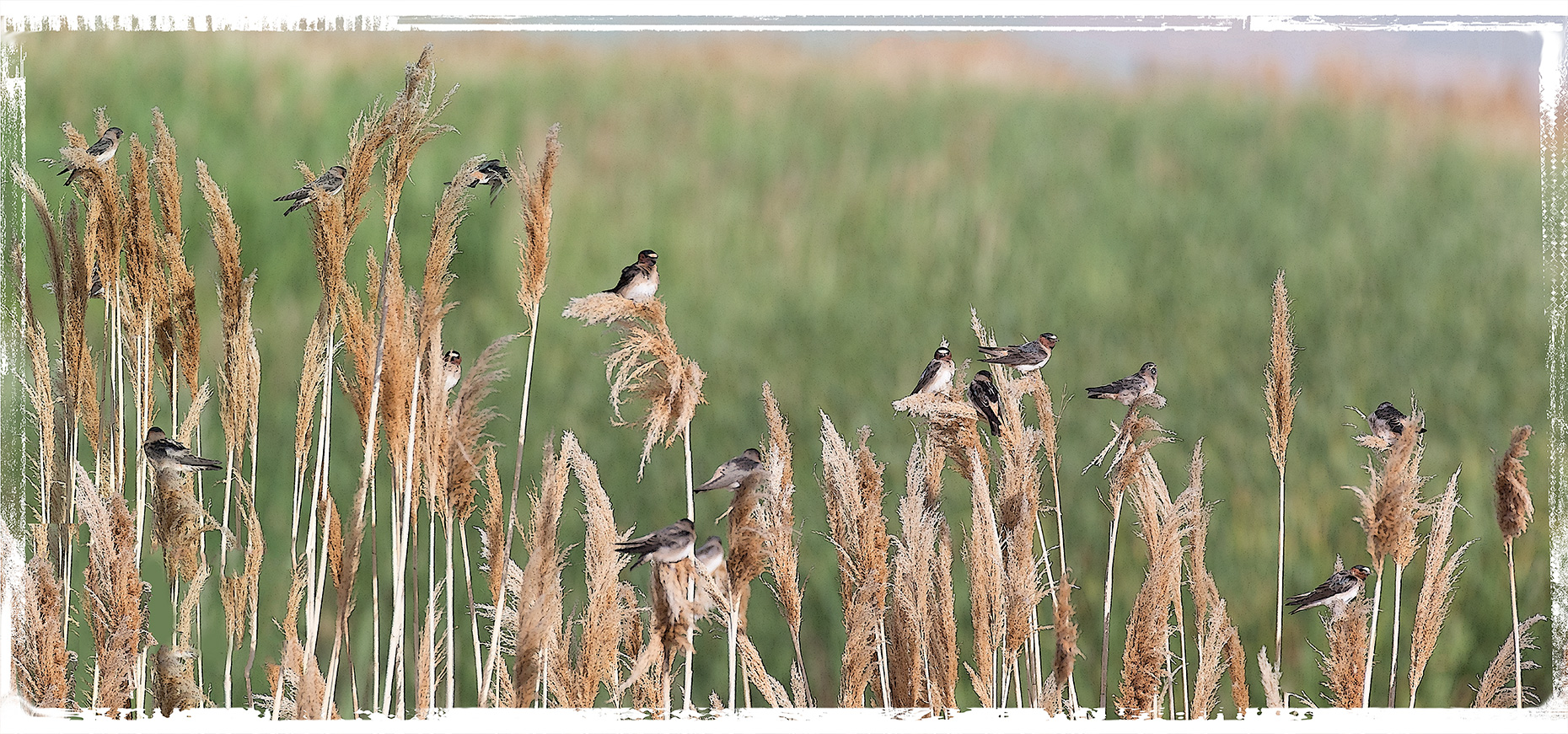After completing the auto tour the first day and not seeing a single Avocet chick, I was worried we were too early to see baby Avocets. Luckily, halfway through the evening tour of the refuge, Leslie spotted this Avocet moving strangely. Two parents were about to shift place on the nest. Though Leslie missed the exchange, she managed to get a shot of these chicks just as the adult settled in.
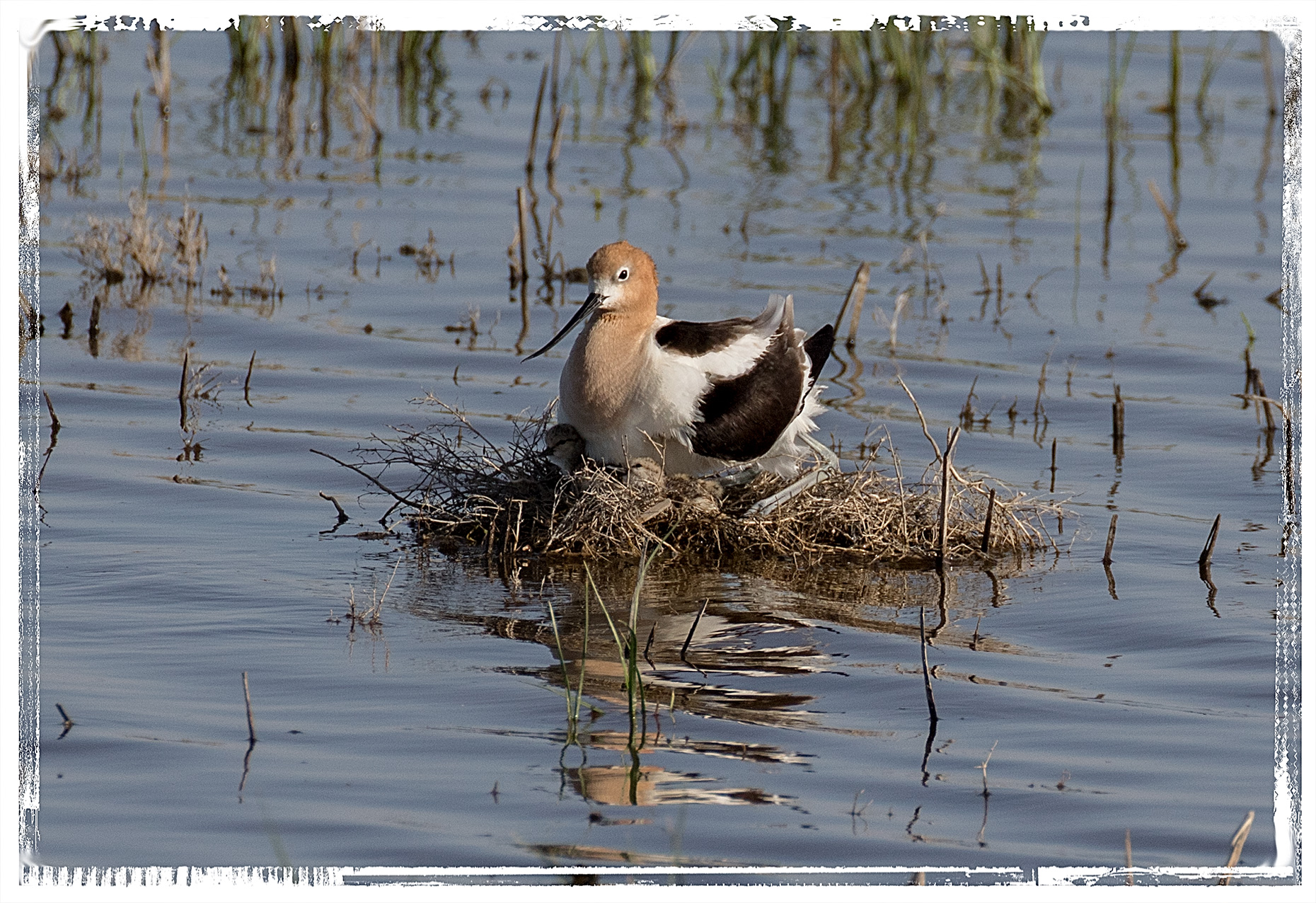
It wasn’t clear if the chicks were trying to escape the nest or seek safety under the parent.
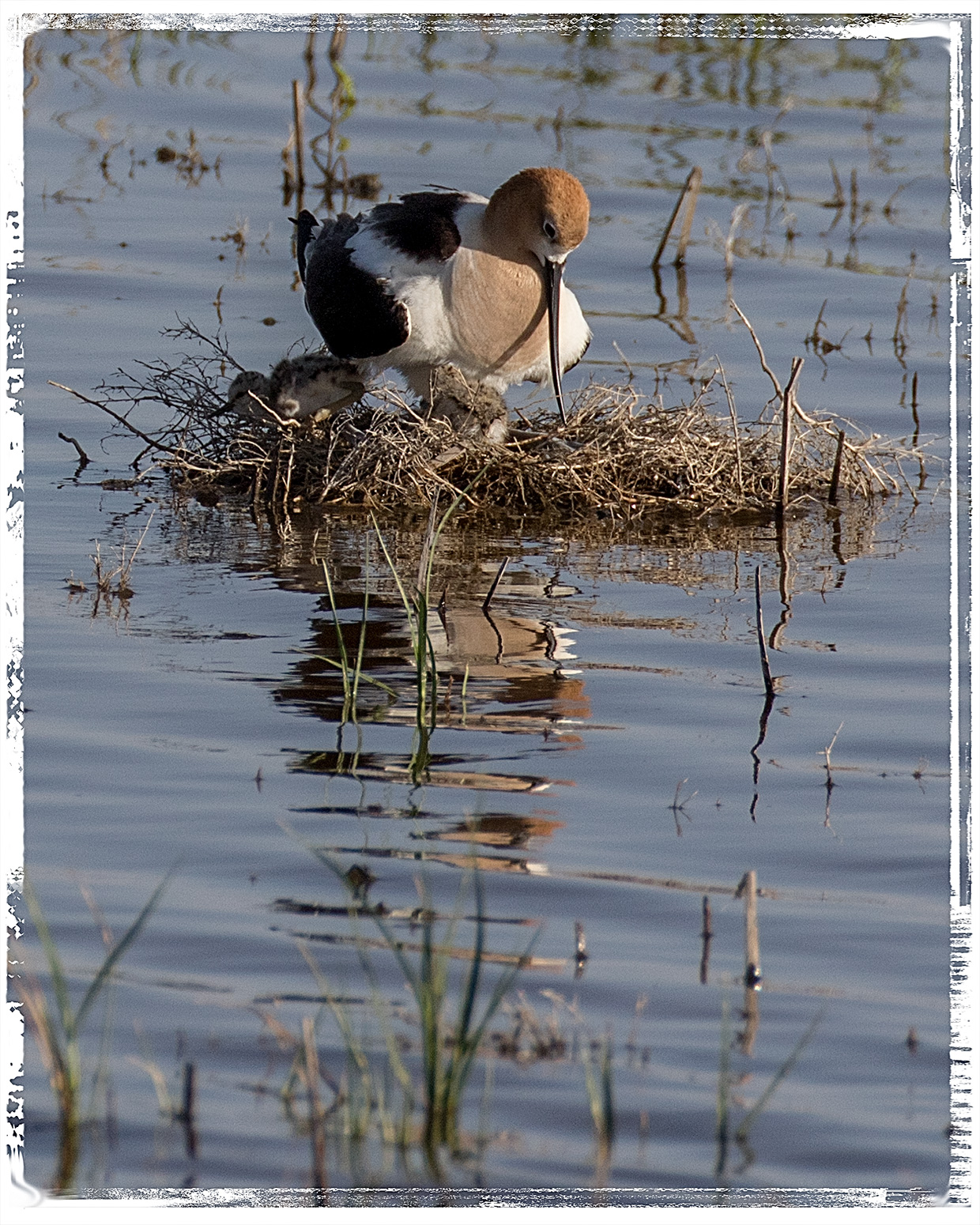
Heck, it wasn’t even clear how many chicks there were.
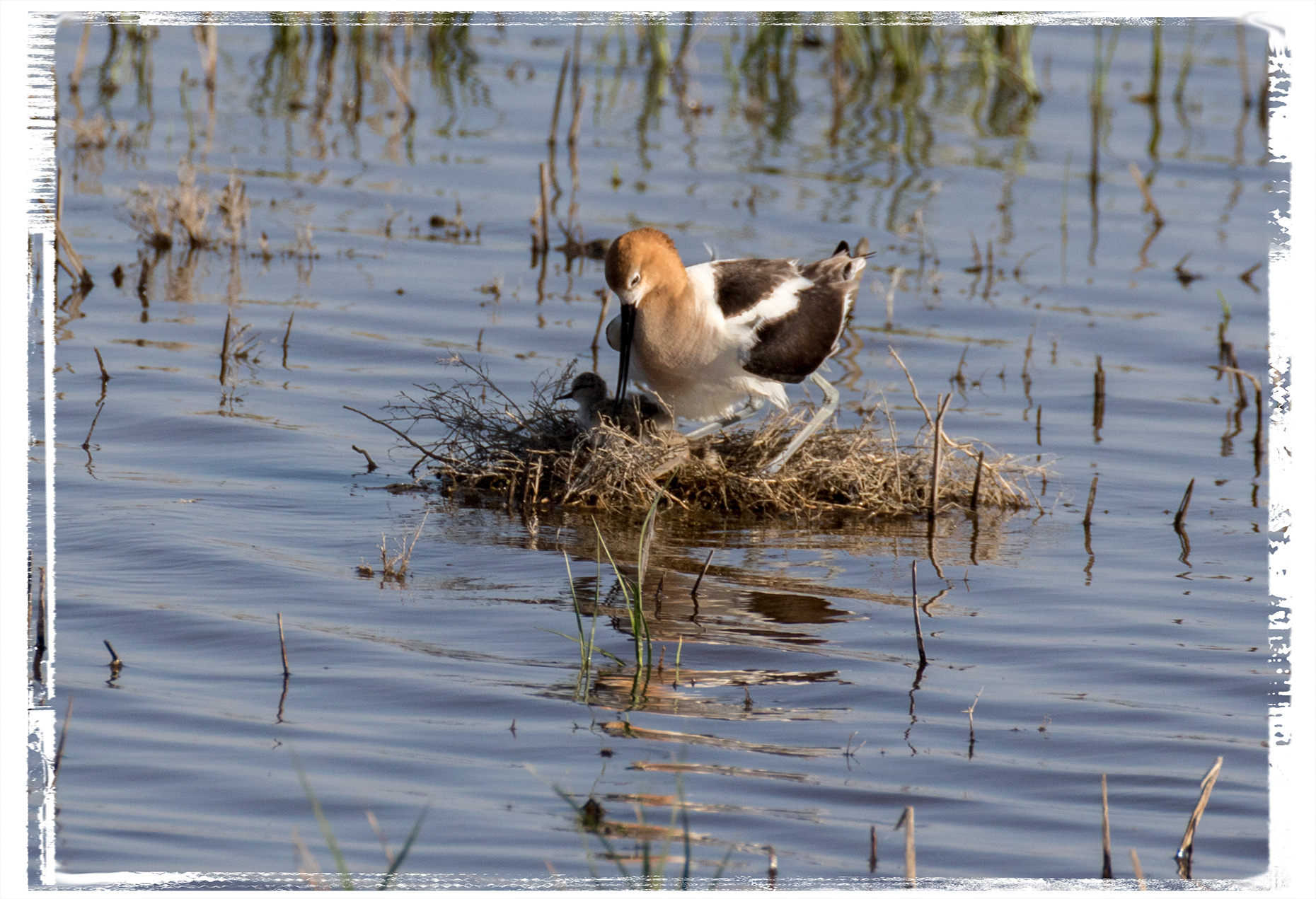
After Leslie spotted them, I managed to focus my 500mm lens, with a doubler, on them and get some slightly better shots. This shot
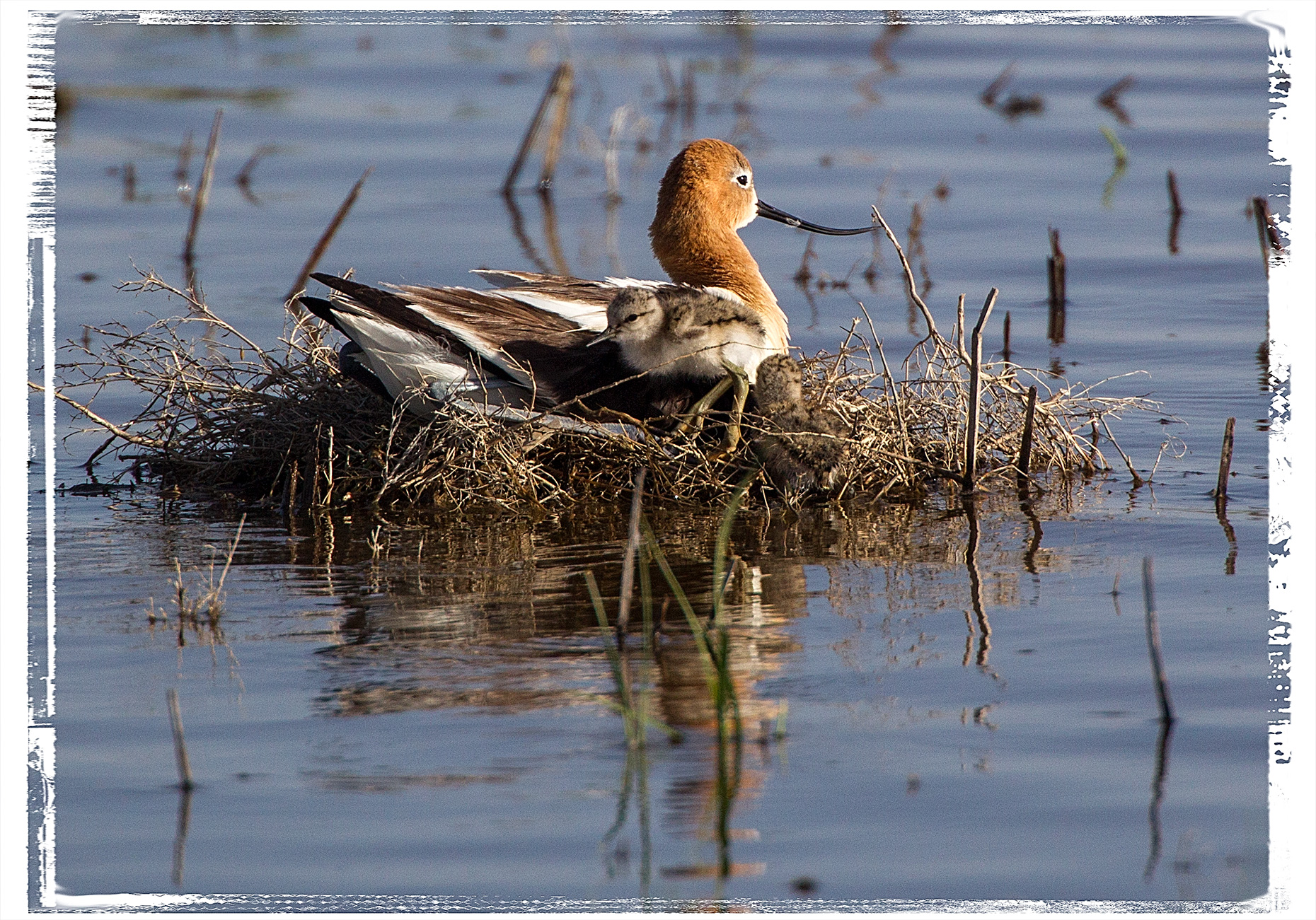
probably shows the chick better than any of the many shots we took. I was particularly amazed at the long legs.
My favorite shot, though, is this one of the chick trying to crawl up on the adult, but the adult (it must have been the male) kept turning its head away from the chick.
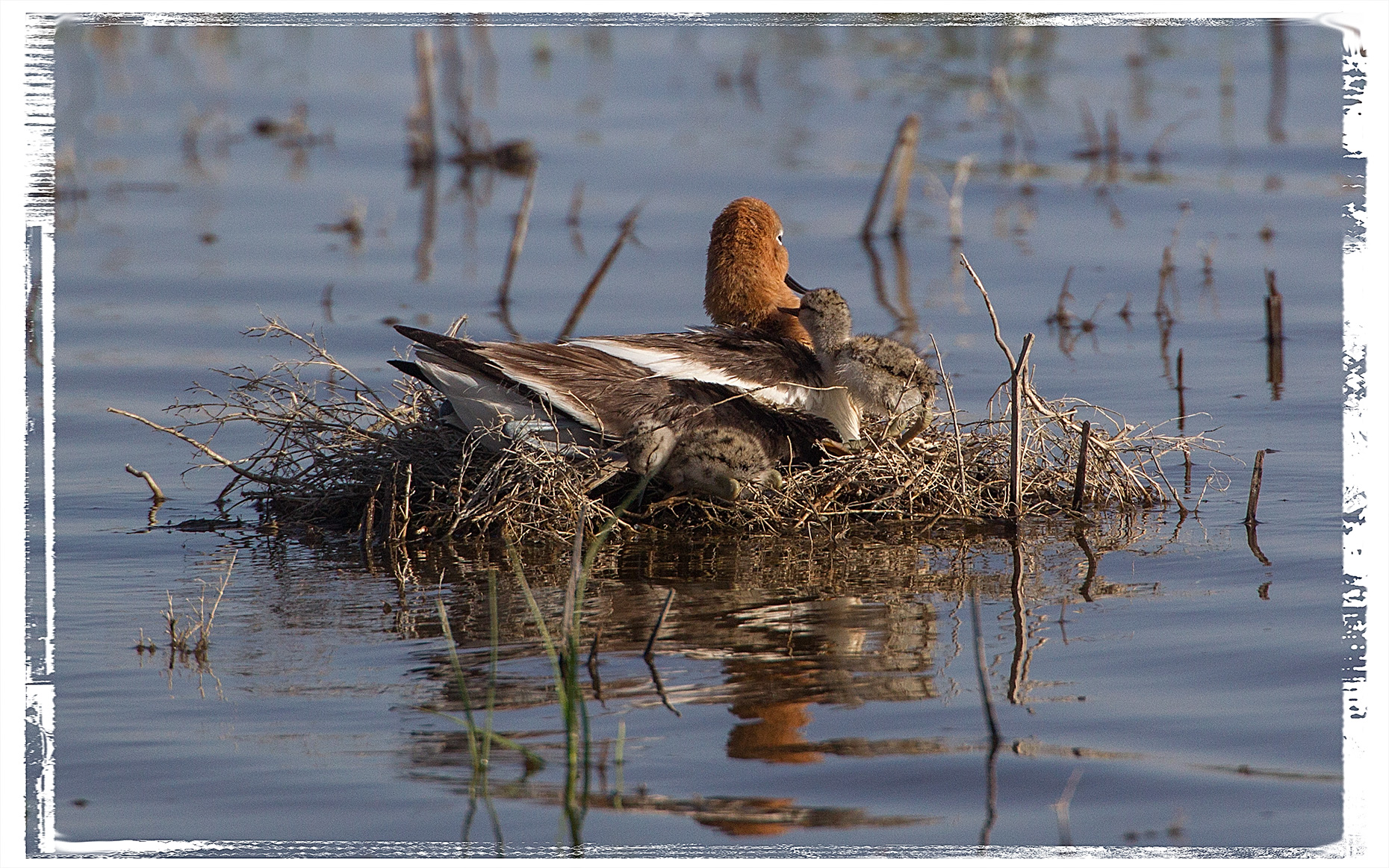
This had to be the highlight of our trip.
Mission Accomplished.

